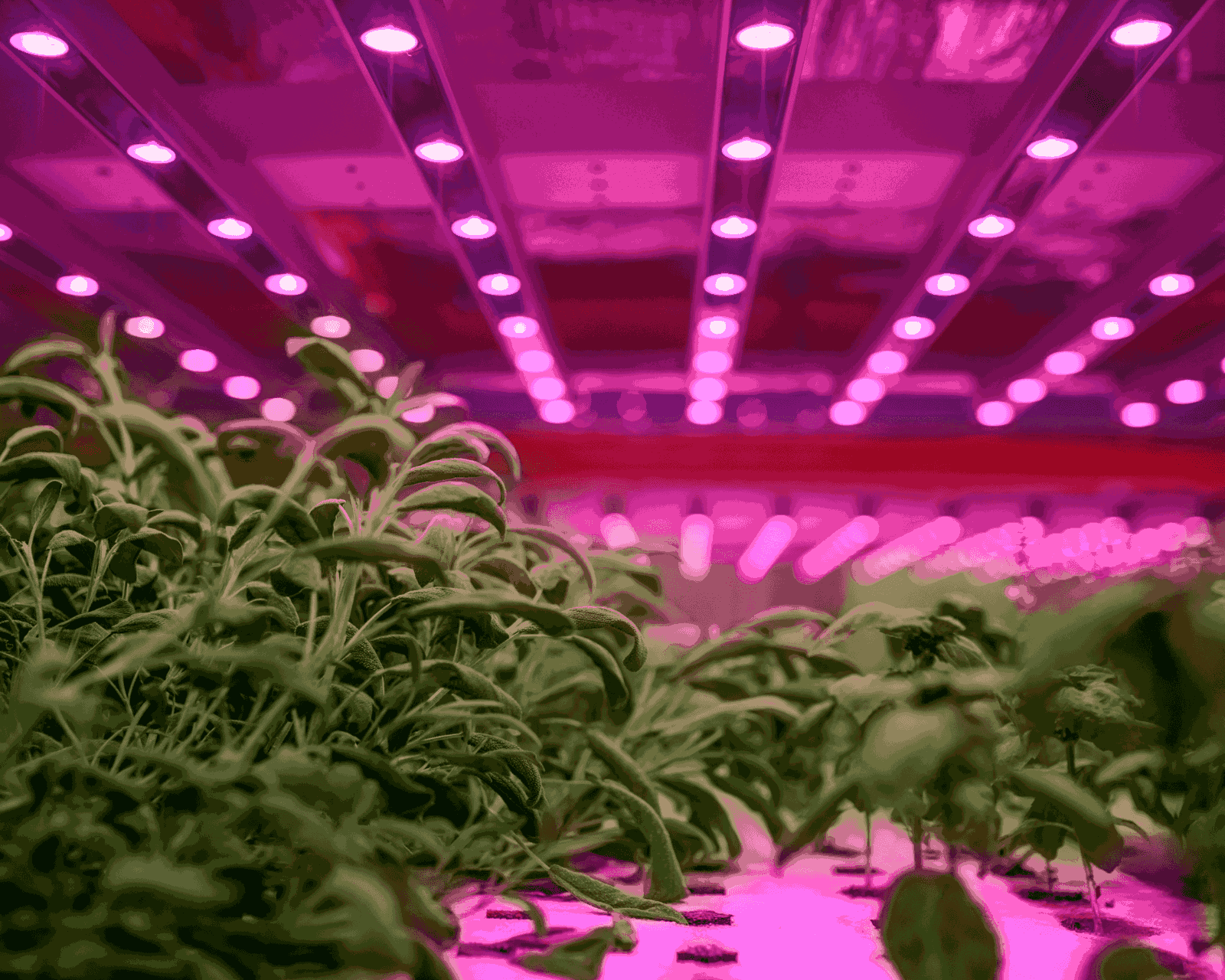We all know that plants need light for healthier and more robust growth with the assistance of photosynthesis. Nowadays, light from two sources, sunlight and LED grow light, are the most popular plant production methods. Both sources are widely used for plant cultivation in the most controllable way.
Many things need to be clarified about both sources of light and how they are different from each other.
Gardeners notice the efficiency of both lights based on factors such as the duration of receiving light, the quality of light in terms of wavelength, and the intensity in terms of the total amount of light. The cost of artificial lights is also considered.
Here comes the banter between nature and technology while deciding on the best option. Every gardener, whether a beginner or experienced, wants to know why plants need light.
In this blog, we will discuss the importance of light for plants and learn about the difference between sunlight and LED grow light. This will help identify which light source is better for gardening, considering their pros and cons.
Why Plants Need Light?
Plants benefit humans and animals by absorbing carbon dioxide and providing oxygen. Plants acting as trees also offer cool temperatures and shade.
Plants manufacture various products, such as medicine, cosmetics, paper, fuel, lighting, charcoal, etc. They also serve as a source of food for people. This can happen only with light.
We all once studied in school that plants cover photosynthesis. Plants, with the help of chlorophyll, absorb light and break it into different compounds to produce essential sugar. Plants combine with water for hydration and soil for nutrients for good health.
Light also benefits plants by creating color spectrums or wavelengths. The red side of the spectrum flourishes in flowering and fruiting plants, while the blue spectrum helps them grow.
Remember! You must identify which color spectrum suits your plant. Every spectrum has unique characteristics that ensure healthy growth for different plants.
Sunlight
Sunlight supply lights are the most common and accessible source of plant growth. It is the natural source of light, essential for photosynthesis. It is affordable and always available.
No other source or equipment is needed while sunlight is present. Sunlight assists plants with necessary nutrients in a variety of climates and environments. It also provides a full spectrum of light to plants for solid growth. The following are the benefits and limitations of sunlight:
Benefits of Sunlight
One key benefit of sunlight is its availability. It is free in the environment, and there is no limit to sunlight emission. People do not have to pay for it. Plants can be grown indoors near open windows and outdoors under the sun. From germination to blooming, sunlight is very beneficial.
Its blue spectrum improves the growth of plants while the red spectrum flourishes the flowering and fruiting. Other than red and blue lights, UV and green light is also involved. Only the suitable wavelengths are absorbed by the plants for growth.
Sunlight is abundant and can be exposed to plants. The sun moves with the sky all day, so you can move the plant in its direction. Furthermore, sunlight is strong and energy-efficient under certain conditions.
Research shows that plants need almost 6 hours of sunlight for best growth. Meanwhile, growing plants with artificial light requires nearly 14 hours to meet the growth requirements.
Limitations of Sunlight
Sunlight is not always available, and that’s the major drawback of it. At first, the drawback of sunlight is not under our control. It is only sometimes available in one location.
As the days get shorter in colder areas, the intensity of light drops and temperatures get chilly. Plants are continuously moved from one place to another to get adequate light. The weather conditions affect the duration of sunlight.
In case of rain, plants are unable to receive sunlight. In an uncontrollable environment, managing plant production while growing becomes difficult.
Furthermore, sunlight can also damage plant leaves. This is due to direct exposure to sunlight with high intensity. Sometimes, plants only need a little light to grow.
Sunlight is not customizable because it’s natural. It always provides plants with a full spectrum at once, so plants have to bear the negative aspects of sunlight, too.
 Artificial Grow Light
Artificial Grow Light
Artificial grow lights or LED (Light Emitting Diode) grow lights are the most popular demand of gardeners.
They are made by managing the needs of plants with the advantages such as controllability and energy efficiency. The following are the benefits and limitations of artificial lighting:
Benefits of Artificial Grow Light
Artificial lights are more controllable than sunlight. Gardeners can use dimmers to adjust the amount of light in different plant growth stages. The requirement for light changes varies with plant species and growth cycle.
Furthermore, plant growth can be maximized as it is not dependent on weather conditions. Artificial lights can assist in longer-duration growth cycles for indoor and outdoor setups. If the duration of light is long, plants flower and fruit quickly.
Furthermore, LED grow lights require less energy than traditional fluorescent bulbs for growth. HID lamps can be used for better production.
Among all artificial lights, incandescent bulbs are considered more reliable regarding bulb lifespan. Halogen and horticultural lights can also be helpful, but they are costly.
Limitations of Artificial Grow Light
It is unfortunate that growth lights do not provide a full spectrum like the sun and are not as powerful as sunlight.
Artificial lights also need more time to deliver the same energy to the plants. In an indoor setup, it can take up to 14 hours.
The selection of the wrong bulb can also affect a plant’s growth. Incandescent bulbs produce red wavelengths, while LED and fluorescent bulbs emit blue light.
On the other hand, halogen and horticultural bulbs offer both wavelengths, but they are outside your range. Different ranges of the spectrum cause deficiencies of nutrients needed for plant growth.
Electric bills are another major issue when using these bulbs. The higher the consumption of bulbs, the higher the bills.
 Natural vs Artificial Light: Which is Better?
Natural vs Artificial Light: Which is Better?
Both sunlight and artificial lights are beneficial for every gardener. Sunlight is natural, accessible, and strong, but not always available.
At the same time, artificial growth lights are not free but low cost. Sunlight is not controllable, but light quality and controllability can be managed easily. But here arises a question about growing plants in artificial light vs sunlight: which is best?
The answer depends on your need. The sunlight and growth light depends on the plant’s size, species, and location. If a plant needs high intensity, sunlight is the best option. But if the low-intensity light is ideal for plants, the magic of article light comes here.
Artificial grow lights give you freedom for growth. If both sources of light are used simultaneously, it can boost the plant’s health.
Here are some quick differences between sunlight and LED grow lights to identify which is best for your plants:
Energy Efficiency
Sunlight does not need any energy source, while artificially growing lights need electricity.
Convenience
There is no blockage to sunlight if the weather conditions are favorable. But artificial growth lights ace no hindrance in any condition.
Safety
The high amount of sunlight can be harmful to delicate plant leaves but can also be good for mental well-being. Artificial lights do not affect plant growth.
Wrap Up
If you do not want to spend too much money on your germination setups, sunlight may be the best option. But if you are worried about external factors, you can go for artificial grow lights. The ball is in your court now!







